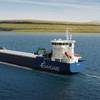DNV GL Mulls Digitalization in Wind Energy
Digitalization is already playing a major role in the growth of wind energy, but it can still drive further improvements in operational efficiency, decision making and cost efficiency – if it can overcome concerns around data sharing.
According the report ‘Digitalization and the Future of the Wind Energy Industry’ published by DNV GL, iproving operational efficiency (identified by 52% of respondents), decision making (42%) and cost efficiency (40%) are top priorities for further digitalization.
Balance between sharing data and protecting competitive advantage and Intellectual Property key to realizing full potential of digital technology in the industry.
Based on a survey of almost 2000 engineers and senior executives from across the energy sector, the report assesses the current progress of digitalization and identifies the top priorities for and barriers to further growth.
The wind industry is widely expected to become an ever-greater contributor to the world’s future energy mix.
DNV GL’s Energy Transition Outlook report forecasts a 15-fold escalation in wind-powered generation from 1.1 PWh in 2018 to 17 PWh in 2050. In terms of installed electricity generation capacity, the amount of wind energy will increase more than 8 times by 2050 to 5TW globally.
Digital technologies have been one of the key reasons behind wind power’s growth to date. DNV GL’s report ‘Digitalization and the Future of the Wind Energy Industry’ reveals that digitalization will also be vital in achieving the wind energy industry’s ambitious future growth targets.
However, the report also highlights that the benefits of digitalization could be threatened by issues over sharing data and limited willingness to provide more transparency. Such doubts are particularly felt in the offshore sector where concerns over data sharing (37% of respondents) and inability to access data (25%) were cited as the biggest barriers to further digitalization.
Interestingly, barriers related to data were a greater concern in the wind industry than in other parts of the energy sector. Other potential barriers identified include digital skills gaps within the industry and organizations focusing on other priorities.
“The wind industry already uses vast amounts of data to improve performance, for example exploiting wind farm SCADA data to enable a predictive approach by anticipating faults and planning maintenance in order to ensure greater up-time,” said Lucy Craig, Vice President of Technology and Innovation at DNV GL – Energy.
“However, this increased reliance on data brings new challenges and the wind industry faces conflicting priorities when it comes to data sharing. While the benefits to sharing are clear, there is also an essential requirement to protect competitive advantage and intellectual property. Finding the balance will allow the wind industry to unlock a bright digital future,” Craig said.












